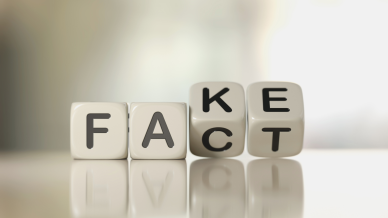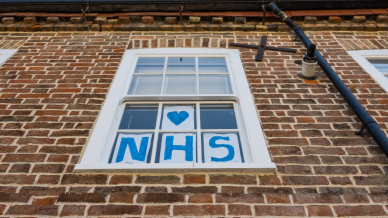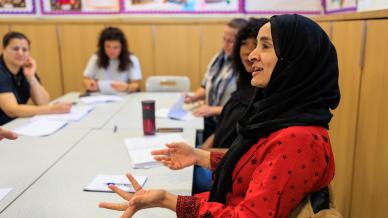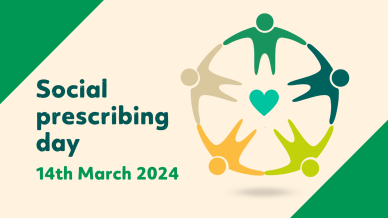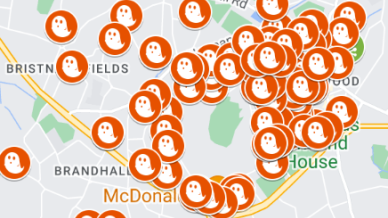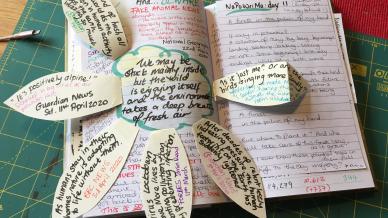In a recent Ipsos poll of over 25,000 people, 86% believe they’ve been exposed to fake news. Of that number, nearly 9 in 10 admit to initially believing the untrue news articles.
And it's not hard to see why. Misleading headlines, AI-altered images and convincing facts all work to confuse and deceive the people reading them. But how to tell real information from false information? We’ve searched around and gathered some tips on how to recognise fake news so that you can spot mis and disinformation when you see it.
Firstly, what is fake news?
The Cambridge Dictionary defines it as: ‘False stories that appear to be news, spread on the internet or using other media, usually created to influence political views or as a joke’.
Other reasons may include attracting more visitors to a website, as propaganda, or incite anger and violence. There are two types of false information that these articles may contain; misinformation or disinformation.
What is misinformation?
Misinformation is false news that has been made and shared by mistake.
What is disinformation?
Disinformation is false news that has been made to intentionally mislead people.
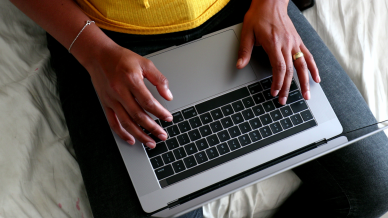
10 tips for how to identify fake news
1. Look at the web address of the article
An easy way to spot fake news is to look at the URL (the weblink) of the website article. Some fake sites will have strange domain extensions (that is the bit on the end of a website address – usually .com, .org., co.uk, .edu, etc) or misspellings in the URL.
2. Take a wider look at the article
Assess the overall page design – does it look amateurish, have many adverts or include low quality, stolen or altered images? If so, this could be a clear sign that the news you are reading is, if not outright fake, questionable at the least.
3. Look into the news outlet of the article
Do you recognise the news outlet (for example BBC, CNN, Al Jazeera)? If not, have a search online to see what you can find out about them. Equally, they may be known to be a satirical website and so the piece you are reading could be a parody.
4. Explore the author
Check to see if there is an author name attached to the article. If there is, it could be worth looking the person up and seeing if they are real, have a good reputation, and are writing about something in their field of specialty. Think about whether they might have an ulterior motive for writing it.
5. Spellcheck the article
If an article has various misspelt words (or overall poor grammar), words in all caps, and multiple exclamations, it would be wise to be alert to the possibility that what you are reading is indeed disinformation or misinformation and fake news.
6. Assess quotes and sources within the article
Firstly, check that the article contains data and expert quotes. Credible news articles will have these. If they do, check the article for the sources of the quotes and facts mentioned. Anonymous and unreliable sources or quotes or data with no source given are a key indicator of fake news.
7. Has the article been reshared or reported on?
A good sign that a news piece you are reading is true is by seeing if they have been reposted or reshared on social media or reported on by other reputable news outlets. These organisations will have resources in place for fact-checking. If the story is being reported, it gives the story more credibility.
8. Check to see if images are authentic
AI can manipulate images so well that it can be hard to tell the difference between real or altered images. However, there can be a few giveaway signs, such as warping - where straight images in the background appear wavy – strange reflections and shadows, weird edges or unnatural colours.
If in doubt, you can use Google's Reverse Image Search to see where the image originates from and if it has been edited.
9. Take note of the overall message
When you read the article, does the key message and the arguments seem balanced and reasonable? Fake news pieces usually push one main viewpoint and message, as well as include fanatical claims and angry rhetoric.
10. Use a fact checking site
You can always turn to a trusted fact-checking site to spot if a news article is fake. FactCheck, Snopes, PolitiFact and BBCVerify are sites that confirm news articles.
